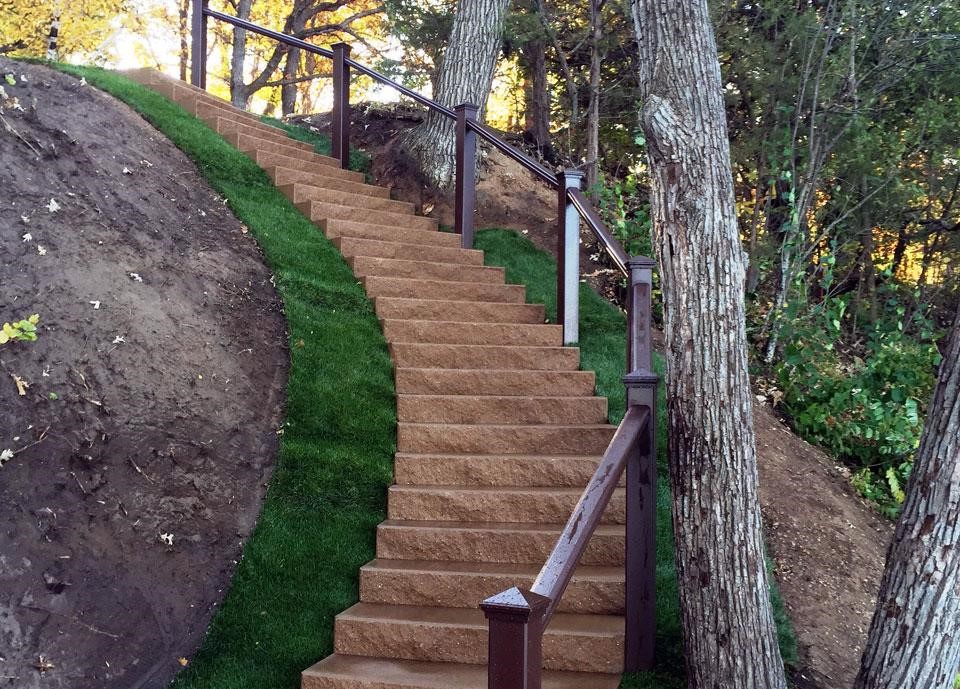
The faux stone used for outdoor stairs has so many names you’d think it was in a witness protection program: you might know it as cast stone, manufactured stone, engineered stone, artificial stone, manmade stone, or a similar term. You (and we) still may not be sure what to call it, but two things are certain: our loincloth-wearing ancestors did not use it in their landscaping projects, and it can be an excellent addition for your landscape.
Many homeowners wrestle with the “should we get stone or faux stone?” question. That’s a tough internal debate only because both materials are great. We haven’t seen your property, and can’t weigh in on which is better in your particular situation, but we can tell you the advantages of each.
The upsides of natural stone are clear: it looks natural, you know it’s durable, and you know the manufacturer of it will never go out of business unless there’s a supernova.
Faux stone has its advantages, though, like that it is:
- Less expensive
- Easier to prefab into exactly the shape and size you need or want
- Easier to make a uniform color, texture, and gloss
- Easier to replace pieces of, if any gets broken or dinged during construction, during daily use, or over the years
- Of uniform strength, in that it doesn’t have a “grain” the way some stone does, and is unlikely to crack or shear off in unpredictable ways
- Easier to attach to a concrete footer, and often easier to integrate with other features, like handrails or edging
Many of our customers opt for and love faux stone staircases and steps because it’s easier for us to meet all of their specs, and that’s why we love it, too.
Being able to engineer just about every part of the staircase is important, and it fits right in with our general approach to landscaping. Before laying a single stone, we “read” your landscape to see how it behaves: where water flows, where water pools, what parts are eroded, when land is the right grade for a staircase to have a safe or optimal rise and run, whether and where landings or turns might fit in, which trees’ root structures might interfere with the steps, whether the steps get enough light, and so on. There’s a good chance we’ll end up suggesting regrading some of your landscape, relocating other landscape features, or other changes.
We’re all about looking at the whole landscape, measurement, surface prep, and making sure your staircase can stay put for 200 years. Contact Landscape Guys today to discuss your goals and to get an estimate. We serve the entire Twin Cities area and beyond.

